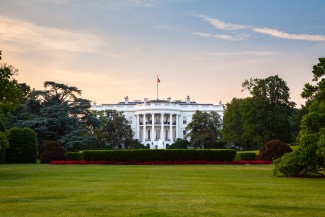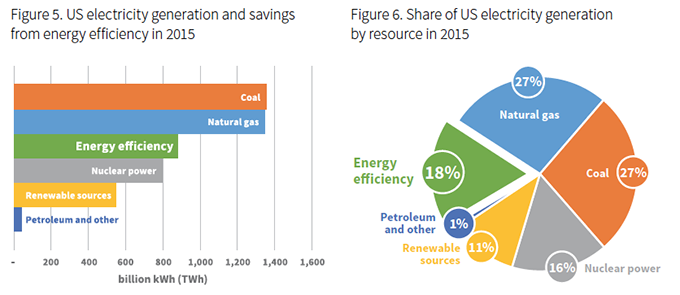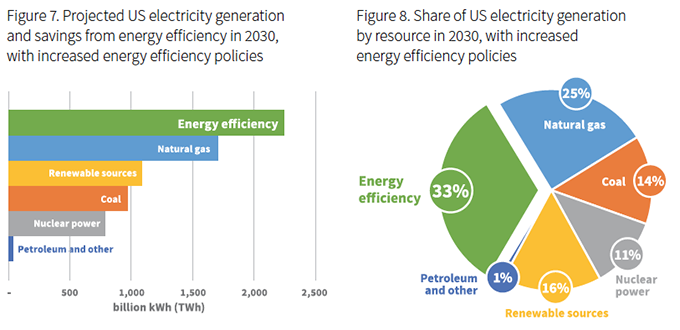Today the Trump Administration is launching an Energy Week to promote our nation’s “energy dominance” by increasing fossil fuel production. Notably absent in White House plans so far are discussions on how to increase energy efficiency, generally the cheapest way to meet our energy needs. Energy efficiency doesn’t just save us money, it supports millions of jobs. It should be included in a truly great Energy Week.
Energy efficiency is already big. Our recent research report, which evaluated only the electricity sector, estimates that efficiency measures since 1990 have made efficiency our third largest electricity resource, after natural gas and coal. (Broader analyses that go back to the 1970s have found that efficiency is already our nation’s largest energy resource). While this finding may seem strange to some—how can not using power be considered a resource—in reality, it’s simple. Utilities can meet rising electricity demand in two ways: by generating more power or by reducing demand. Utilities encourage customers to use efficient technologies to reduce their energy waste while providing the same level of service. Considered this way, energy efficiency is a resource similar to power plants, wind turbines, or solar panels.
In many areas of the country such as the Northwest, electric utility planners have been relying on energy efficiency for years to keep the lights on. These planners have learned to use efficiency because it’s reliable and generally cheaper than coal, natural gas, and renewables. Our investments in energy efficiency have paid off, saving customers money, reducing pollution, advancing cutting-edge technologies, and creating jobs. Without these investments since 1990, we would need the equivalent of 313 additional large power plants to meet current US energy needs. This is more than three times the coal electricity production in Germany or about two-thirds of the existing coal electricity in the United States. If we consider energy efficiency measures a segment of the US electricity resource “pie,” they would count for 18% of total generation in 2015. Here are graphics from our report:
In recent years, efficiency has rapidly grown as a resource, and it has the potential to increase much more. We already have experience implementing federal, state, and local policies that are proven to work. If the federal government and the states increase measures such as appliance and equipment standards and building codes, efficiency could become our nation’s largest electricity resource by 2030 and provide one-third of our total expected electricity needs.
Greater energy efficiency will help make great American jobs, too. The Department of Energy estimates that 2.2 million Americans currently work at least part time in designing, installing, and manufacturing energy-efficient products and services. While these workers might be less familiar than coal miners to many, you need to look no farther than your ENERGY STAR® appliances to see the products of their labor. Maximizing our energy efficiency resource could employ hundreds of thousands more Americans, save the nation billions of dollars in energy bills, and leave a lasting example of prudence for future generations.





